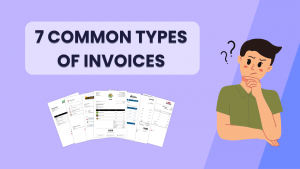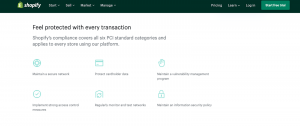Salesforce surpasses 1 million AI agent-customer conversations, says finance chief
They are doubling down on artificial intelligence in the contact center and customer service and support space. According to a July 4 Research and Markets report, the global conversational AI market is expected to grow from $17.05 billion in 2025 to $49.8 billion by 2031. And it has a compound annual growth rate of 24.7% projected through 2029. The underlying sentiment across some Reddit threads featuring contact center agents isn’t hatred of AI.
Lessons in agentic AI adoption
This happens in an iterative process until the appropriate plan is reached. How do you balance risk management and safety with innovation in agentic systems — and how do you grapple with core considerations around data and model selection? In this VB Transform session, Milind Naphade, SVP, technology, of AI Foundations at Capital One, offered best practices and lessons learned from real-world experiments and applications for deploying and scaling an agentic workflow.
My 8 ChatGPT Agent tests produced only 1 near-perfect result – and a lot of alternative facts
The platform now resolves 84% of customer queries autonomously, has led to a 5% reduction in support case volume, and enabled the company to redeploy 500 human support engineers to higher-value roles. The partnership comes amid broader scrutiny of AI’s role in education, with institutions grappling with questions of academic integrity and the appropriate use of AI tools. By requiring verification and emphasizing accuracy, both companies aim to address these concerns while expanding access to AI capabilities. However, the company sees strategic value in building relationships with academic users. Unlike many tech companies that monetize through advertising, Dwyer said ads represent “less than a half of a percent of our revenue” and the company doesn’t sell user data. Based on their intuition of how human agents reason while responding to customers, researchers at Capital One developed a framework in which a team of expert AI agents, each with different expertise, come together and solve a problem.
Designed around a unified control plane, the layer lets teams rapidly develop AI-driven agents while enforcing centralized policies and guardrails. It ensures consistent implementation of risk and governance frameworks while encouraging speed. Developers can deploy experiments quickly, then evaluate and scale based on feedback and performance, all without compromising brand trust.
A recent Salesforce report details just how much artificial intelligence (AI) tools are being used in the workplace today.
Reflection’s ultimate goal is building superintelligent AI—something that other leading AI labs say they are working toward. Meta recently created a new Superintelligence Lab, promising huge sums to researchers interested in joining its new effort. A minority of agents are already working with AI or proactively training for what’s next. While few believe AI is eliminating jobs wholesale yet, many workers say it’s increasing their workload through inefficiencies, AI hallucinations and broken workflows. I’d be surprised if there was anyone left by this time next year,” u/HausWife88 said.
Deloitte also estimates that global enterprise investments in generative AI could surpass $150 billion by 2027, reinforcing the scale and urgency of this technological shift. As for those that worry AI will cause a disconnect among workers, the index told a different story. Daily AI users are 246% more likely to feel more connected to colleagues and reported a 62% higher sense of belonging at work. At the same time, facing increased pressure to adopt AI across an ever-growing number of their operations, employers will have to figure out how to strike a healthy balance in achieving human-AI collaboration.
- How do you balance risk management and safety with innovation in agentic systems — and how do you grapple with core considerations around data and model selection?
- For Perplexity, founded in 2022, the education market represents a natural fit for its research-focused AI tools.
- Let me get you through,’ and we’ll get that through to our engineering team,” Slowey explains.
- Box and Workday, for example, have both recently unveiled their own proprietary agents for customers.
I asked Reflection leaders what the path to more advanced might actually look like. They believe an increasingly intelligent agent would go on to become an oracle for companies’ institutional and organizational knowledge. Eventually it would invent new algorithms, hardware, and products autonomously. Our sister community, Reworked, gathers the world’s leading employee experience and digital workplace professionals.
- “As more workers embrace AI, businesses are able to unlock greater productivity and value, and help their employees focus on work that drives real impact and growth,” said Doolan in a statement.
- Tapping into more data across a company provides more information that will help the AI agent eventually build good quality coding independently.
- And 50% of this cohort say AI hasn’t changed how often they ask questions or collaborate with teammates; in fact, 29% say it’s actually increased their engagement.
- Dwyer noted that unlike traditional software, AI tools have direct computational costs for each query.
In terms of models, Capital One is keenly tracking academic and industry research, presenting at conferences and staying abreast of what’s state of the art. In the present use case, they used open-weights models, rather than closed, because that allowed them significant customization. That’s critical to them, Naphade asserts, because competitive advantage in AI strategy relies on proprietary data. Agentic systems need to work with fulfillment systems across the organization, all with a variety of permissions. Invoking tools and APIs within a variety of contexts while maintaining high accuracy was also challenging — from disambiguating user intent to generating and executing a reliable plan. Across Intuit’s brands—from TurboTax and QuickBooks to Mailchimp and Credit Karma—GenOS helps create consistent, trusted experiences and ensure robustness, scalability and extensibility across use cases.
Customers Still Want Humans—but Hate the Current System
Reinforcement learning, which involves training an AI model through practice combined with positive and negative feedback, has come to the fore in the past few years because it provides a way to train a large language model to produce better outputs. Combined with human training, reinforcement learning can train an LLM to provide more coherent and pleasing answers to queries. With additional training, reinforcement learning helps a model learn to perform a kind of simulated reasoning, whereby tricky problems are broken into steps so that they can be tackled more effectively. Asimov currently uses open source models but Reflection is using reinforcement learning to post-train custom models that it says perform even better. Reflection claims that Asimov already is perceived to outperform some leading AI tools by some measures.
Intelligent agents are the next enterprise platform shift
SheerID immediately checks this against authoritative data sources, which Grimes said the company has built relationships with over 14 years in business. If instant verification fails, the system moves to document review using both AI-powered analysis and manual verification. The evaluator determines whether the earlier agents were successful, and if not, rejects the plan and requests the planning agent to correct its results based on its judgement of where the problem was.
This question gets to the heart of what may be the most significant implication of Salesforce’s million-conversation milestone. The company isn’t just automating customer service—it’s redefining what good service looks like in an AI-first world. The company has already expanded Agentforce to support Japanese using an innovative approach—rather than translating content, the system translates customer queries to English, retrieves relevant information, and translates responses back.



